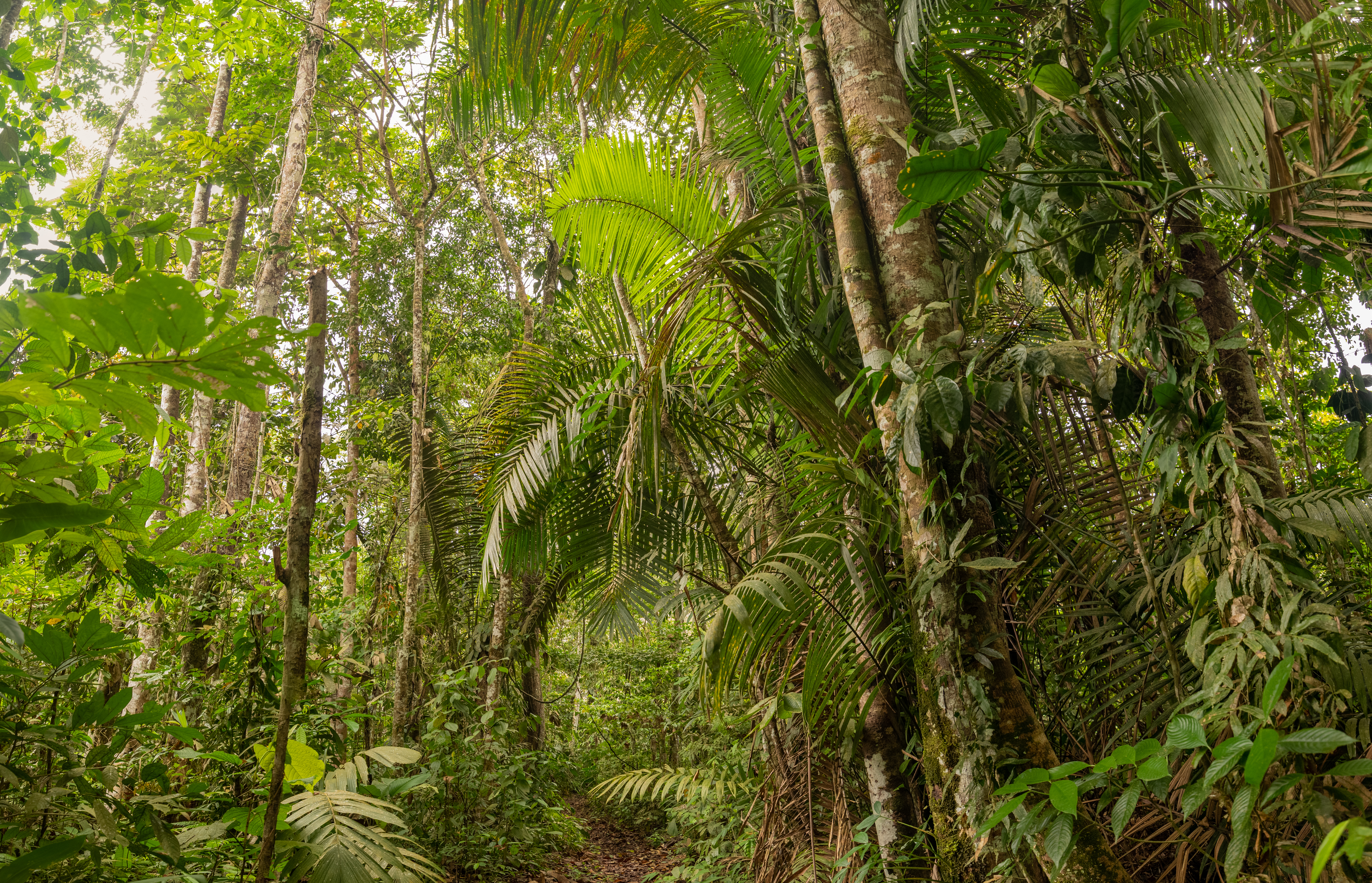Project overview - Canandé Reserve

The Canandé Reserve is located in the Esmeralda Province, in the north-west part of Ecuador. Here, the tropical forest ecosystem flourishes, covering the entire surrounding habitat with dense vegetation and incredible levels of biodiversity, counting thousands of species between flora and fauna.
General Overview - Knowledge pills about the Canandé Reserve
In fact, the reserve covers an area called “the Chocó”, one of the most important and yet threatened biodiversity hotspots in the world. Here, only 2-5% of the original forest remains, due to severe deforestation rates that occurred in the past and recent years. Fortunately, the climate conditions of this specific area are optimal for the natural regeneration of the cleared patches, thanks to the combination of rain and warm weather. This is why expanding and protecting the Reserve is urgent and essential for the balance of the entire ecosystem and its lifecycle.

Figure 1. Canandé Reserve
In fact, the project focuses on and aims to expand the reserve, connecting it to the Cotacachi-Cayapas National Reserve.
Additionally, Fundación Jocotoco partners with Rainforest Connection (RFCx) to add an additional layer to the monitoring activities. RFCx developed a real-time acoustic system able to continuously monitor forest sounds. The system can detect chainsaw sounds and automatically sends an alarm to rangers helping to promptly act, as well as sounds of endangered species, supporting the monitoring of the population's presence.
Being able to track animal species is of paramount importance in this region. Here, 62 species of birds endemic to the Chocó have been identified, of which 37 can be found in the Canandé Reserve. Trap cameras have also recorded rare mammals like Jaguars, Pumas, Ocelots and Brown-headed Spider Monkeys, as well as White Fronted Capuchin.

Figure 2. Brown-headed Spider Monkey
Amphibians are abundant too, counting 71 species of which 35 are endemic and 3 are threatened worldwide, like the Horned Marsupial Frog.

Figure 3 - Horned Marsupial Frog
The reserve is the only known home for two magnolia species: the critically endangered Magnolia canandeanaand Magnolia dixonii.
Chocó Region deep dive
Canandé Reserve lies within the northwest part of Ecuador and is characterized by the presence of the Chocó lowland Rainforest. This ecosystem is part of the wider biodiversity hotspots area called “Tumbes-Chocó-Magdalena”, which spams from extreme Panama to the lower Magdalena valley in Colombia, and along the Pacific coast of Colombia and Ecuador to the north-western corner of Peru.
Commonly recognized as the Chocó-Darién-Western Ecuador Hotspot, this area has been subjected to wild deforestation, which cleared approximately 98% of the ecuadorian forest. The main drivers of deforestation here are farming, cattle, illegal crops, monocultures and population growth.
The Chocó-Darién region is made up of forests, mountains and coastal areas, covering about 187,500km2, of which the most extensive parts are in Colombia.
Here, the rainforests have the highest rainfall rate, with some areas receiving up to 16 meters each year. More than 8,000 plant species, of which 20% are endemic, find their natural habitat, including 97 reptile species, 127 amphibians and almost 600 bird species.
Studies conducted in this region shows that if another 1,000km2 of forest disappear, ⅓ of the species would be lost forever.
-1.jpg?width=2500&height=1395&name=Canand%C3%A9%20Reserve%2c%20Ecuador%20(1)-1.jpg)
What is an EBA?
EBA stands for Endemic Bird Area, a label created by BirdLife International to recognize the Canandné is recognized as an EBA, with a total of 51 endemic bird species, the second highest number of any EBA worldwide.
Partner - Fundación Jocotoco
Fundación Jocotoco is an Ecuadorian conservation non-governmental organization (NGO) established in 1998. It is dedicated to protecting Ecuador's most threatened habitats and species through the establishment and management of strict nature reserves, reforestation, restoration of degraded wetlands, and environmental education programs. The organization is committed to the conservation of Ecuador's biodiversity and has been successful in promoting the recovery of several endangered species. Fundación Jocotoco also owns eco-tourism lodges and a tourism company that helps finance its conservation efforts.